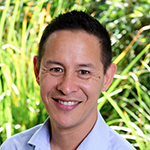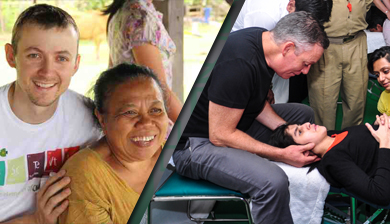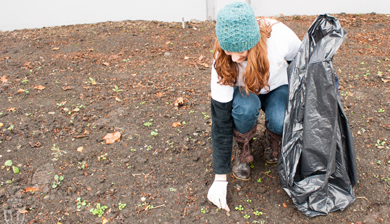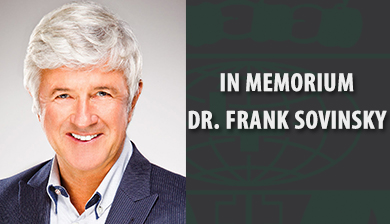When chiropractic faces a threat, Life Chiropractic College West takes notice. Chiropractors who follow a Vitalistic or Salutogenic philosophy, which encourages the creation of health via chiropractic, have become the target of campaigns in both Australia and Canada. While the two countries are an ocean apart, the campaigns have some similarities: Certain groups are taking evidence-based health care and misusing it to take aim at chiropractors, who feel their ability to share chiropractic in a Vitalistic model has been hampered.
 In Australia, a number of things have happened, says Patrick Sim, DC. Dr. Sim, who has recently been named president of the soon-to-open Australian Chiropractic College in Adelaide, South Australia, points to the creation of a group in 2011 called the Friends of Science in Medicine. This Australian association’s goal has been to “stamp out quackery and pseudo-science,” Dr. Sim said. The organization’s website focuses on supporting evidence-based care and calls out where it thinks health care techniques are flawed. The result has been a series of attacks on everything from gluten-free beauty products to vitamins to chiropractic care for infants. Dr. Sim said university courses on topics such as homeopathy and Pilates are being pushed out of the university system because of social pressures orchestrated by this group. Events that used to draw hundreds of chiropractors now no longer exist. And the chiropractic association recently rebranded and is working to leave behind its vitalistic roots.
In Australia, a number of things have happened, says Patrick Sim, DC. Dr. Sim, who has recently been named president of the soon-to-open Australian Chiropractic College in Adelaide, South Australia, points to the creation of a group in 2011 called the Friends of Science in Medicine. This Australian association’s goal has been to “stamp out quackery and pseudo-science,” Dr. Sim said. The organization’s website focuses on supporting evidence-based care and calls out where it thinks health care techniques are flawed. The result has been a series of attacks on everything from gluten-free beauty products to vitamins to chiropractic care for infants. Dr. Sim said university courses on topics such as homeopathy and Pilates are being pushed out of the university system because of social pressures orchestrated by this group. Events that used to draw hundreds of chiropractors now no longer exist. And the chiropractic association recently rebranded and is working to leave behind its vitalistic roots.
“It’s had a huge impact on the chiro community,” Dr. Sim said. “Chiropractors are being pushed into a hole somewhat, and are on the whole more isolated.”
In Canada’s British Columbia, a new policy that took effect Nov. 1, 2018, bans chiropractors from talking about the benefits of chiropractic that do not address musculo-skeletal symptoms. Again, a push for evidence-based care has become a mechanism for targeting chiropractic care. The College of Chiropractors of British Columbia (CCBC), a governing body for chiropractors in the province, created a policy that bans the use of promotional communications such as testimonials on chiropractic websites and in social media, in part because the CCBC says clinical research must show definitively that a particular adjustment will help a particular condition.
Chiropractors in the area say they are not claiming to treat anything, but merely adjusting vertebral subluxations that may result in better health overall, including relief of symptoms from a particular condition. In addition, they say the details of the policy are murky and their questions have gone unanswered by the CCBC. Several chiropractors who have been reprimanded or fined for not following the CCBC policy are now coming together and discussing how to combat what they consider to be unfair treatment toward Vitalistic chiropractors, according to sources familiar with the issue.
Life West President Ron Oberstein, DC, reports that while many chiropractors, and Life West itself, feel that research is an important part of health care, being able to teach and act upon the Salutogenic model of health is just as or more critically important.
[quote align=”center” color=”#999999″]How do we enshrine or protect core chiropractic tenets? We need to teach it and breathe life into it or sign a death warrant.[/quote]
“It’s very important to understand that evidence-based care includes patient value, clinical value, and research value,” he said. “They all count, but if you don’t have the research to support a particular finding, it doesn’t mean it isn’t true. Research only uncovers what is already there. When Christopher Columbus discovered America, it was already there. You can’t rely on a research project that may take years to complete to determine the efficacy of care when you see patients getting better every day in chiropractic offices.”
The Salutogenic model of health care recognizes that the body is a self-healing, self-regulating organism, and when vertebral subluxations are removed, the innate recuperative power within the body allows it to repair and flourish.
In Australia, Dr. Sim said trying to promote the movement for a Vitalistic and Salutogenic model of health care has been frustrating. He sat on the board of what is now called the Australia Chiropractic Association for several years, trying to offer a different perspective of chiropractic. Now he’s leading the new Australian Chiropractic College, which will be focused on a Vitalistic/Salutogenic model.
“It’s not about a new program, but really about how do we enshrine or protect core chiropractic tenets,” he said. “No one else in the country does that, and we need to teach it and breathe life into it or sign a death warrant.”








